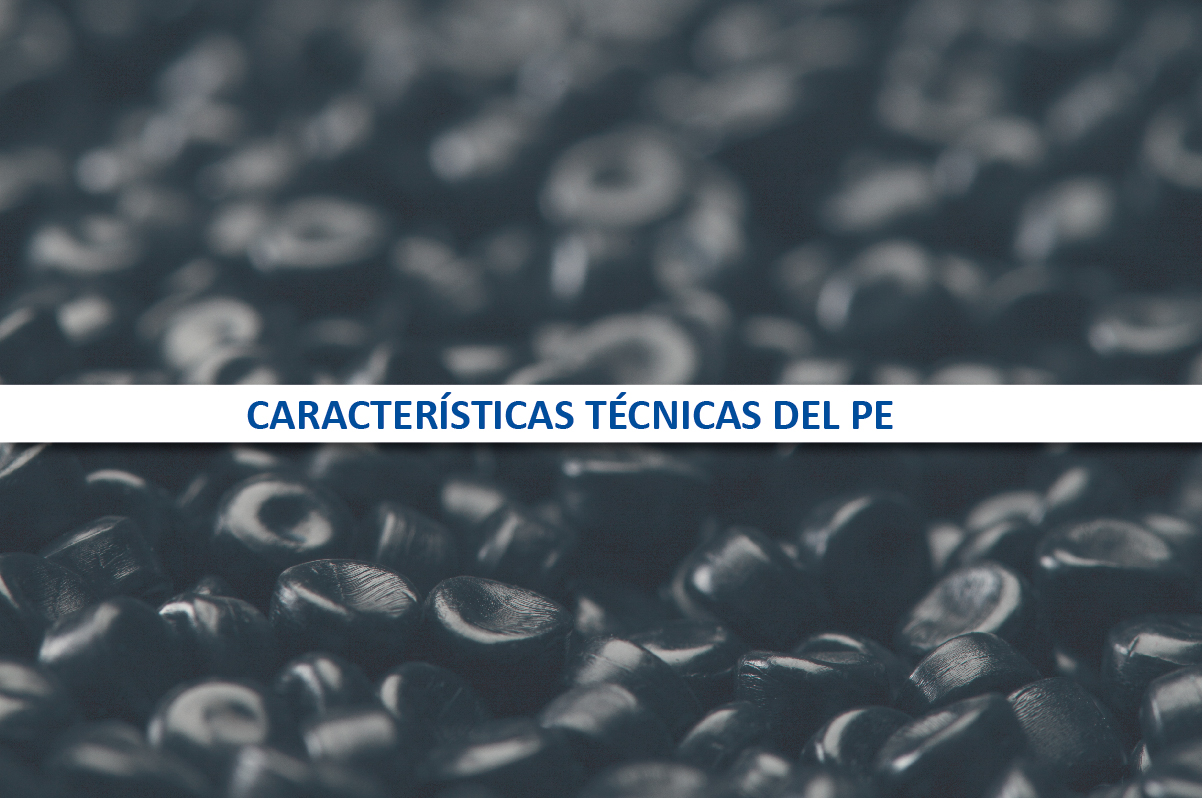Although we have talked on many occasions about the characteristics of Polyethylene (PE) in Llaberia Group’s blog, in today’s article we want to give a more technical point of view.
Let’s first look at the values of the following specific characteristics according to the type of polyethylene:
PE 40
- Polymerization system: high pressure (130 to 150 MPa) and high temperature (250 to 300ºC).
- Structure: highly branched molecular chain.
- Crystallinity: 50 to 60%.
- Densidad: 0,915 to 0,930 (low).
- MRS* – Minimum required stress (MPa): 4,0.
PE 63
- Polymerization system: by catalysts supported at moderate temperature and pressure.
- Structure: low branched molecular chain.
- Crystallinity: 75%.
- Density: 0,931 to 0,940 (average).
- MRS* – Minimum required stress (MPa): 6,3.
PE 80
- Polymerization system: by catalysts at low temperature and low pressure (3 a 4 MPa).
- Structure: long linear chains.
- Crystallinity: 85%.
- Density: 0,941 to 0,950 (high).
- MRS* – Tensión mínima requerida (MPa): 8,0.
PE 100
- Polymerization system: by catalysts at low temperature and low pressure incorporating enhancement copolymers.
- Structure: branched chains.
- Crystallinity: 85%.
- Density: > 0,950 (high).
- MRS* – Minimum required stres (MPa): 10,0.
Type of Polyethylene pipe according to its use
An important factor to consider when differentiating polyethylene pipes is their use, since the color of the pipe will vary depending on it:
- Electrical conduits: yellow, orange and red.
- Gas: yellow, yellow-orange, black with yellow-orange stripes.
- Water reuse: black, black with brown or purple stripes.
- Agriculture: black with green stripes.
- Water supply: blue, black with blue stripes.
- Sanitation or drainage: black, black with brown stripes.
Coefficient of expansion of polyethylene
The coefficient of expansion is an important factor in differentiating polyethylene from many other materials. What does it mean? This concept is a measurement of the relative change in length or volume that occurs in a solid or fluid body inside a container that changes temperature causing thermal expansion.
If we look at the linear coefficient of thermal expansion (mm/mºC) in our case we can see the difference between Polyethylene (PE) and other types of materials. Let’s see the linear coefficient of:
- Polyethylene: 0,17 to 0,22
- PP: 0,11 to 0,18.
- PVC: 0,06 to 0,08
- Steel: 0,011
- Concrete: 0,012
- Cast Iron: 0,012
Polyethylene roughness
Among the hydraulic characteristics of polyethylene, we can highlight its low roughness. The roughness coefficient of a material is fundamental in the hydraulic design of a pipeline. The following values can be accepted for PE, depending on the formula used:
- k = 0,003 mm (hydraulic roughness; Colebrook’s formula)
- n = 0,008 (Manning’s formula)
- C = 150 (Hazen Williams formula)
Focusing on Hazen Williams C roughness, some values for some materials could be as follows:
- PE and PVC = 150
- Cast iron = 130
- Fiber cement = 140
- Used steel = 110
- Concrete = 128
- New steel = 130
This lower roughness coefficient of polyethylene allows it to carry more water flow at the same cross-section than a pipe made of any other material. The unalterable character of this polymer, its low roughness and chemical reactivity prevent the formation of incrustations of any kind inside the pipe.
Applications of jointing systems in PE pipelines
In addition to knowing the technical characteristics of Polyethylene, it is essential to know its most common uses according to the type of joint that is applied in these pipelines. Let’s see which are the most significant ones:
Connections by means of flanges:
Water and gas pipelines of medium and large diameter and at any pressure.
Special connections (with valves, pipes of other materials, etc.).
Repairs.
Butt-welding joints:
Water and gas pipelines of medium diameter and large diameter and at any pressure.
The pipes to be joined can be PE 80 or PE 100, as long as they are of the same material and thickness.
Submarine outfalls.
Rehabilitation.
Electrofusion joints:
Water and gas pipelines of medium diameter and at any pressure.
The pipes to be joined can be PE 80 or PE 100 and also of different thickness.
Repairs.
Connections by means of mechanical fittings:
Small diameter and low pressure water and gas pipelines.
House connections.
If you found this article interesting, stay tuned because soon we will continue with more technical characteristics of Polyethylene, don’t miss it!
